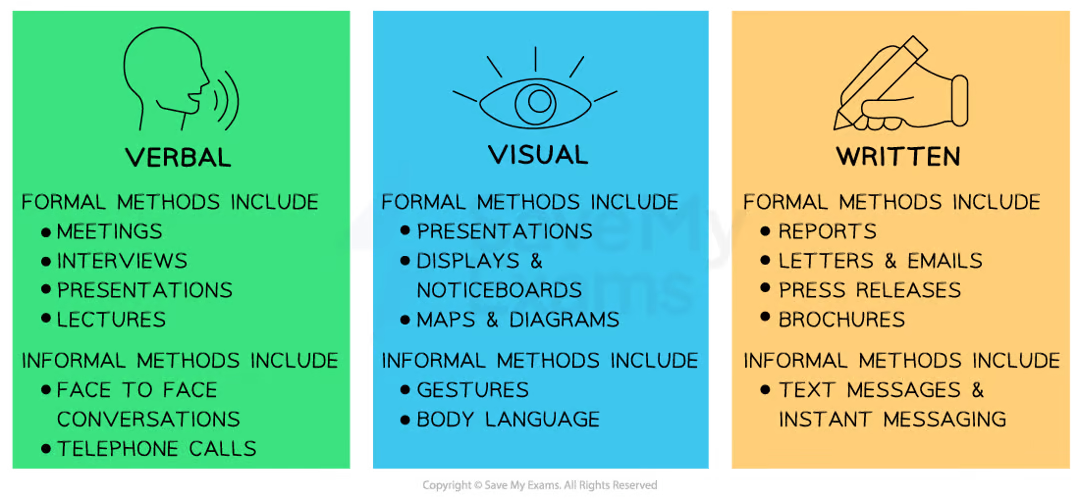People in Business (HR)
1/46
Earn XP
Description and Tags
Name | Mastery | Learn | Test | Matching | Spaced |
|---|
No study sessions yet.
47 Terms
What are the 5 levels (from bottom to top) of Maslow’s Hierarchy
Physiological, safety, social, esteem, self-actualization
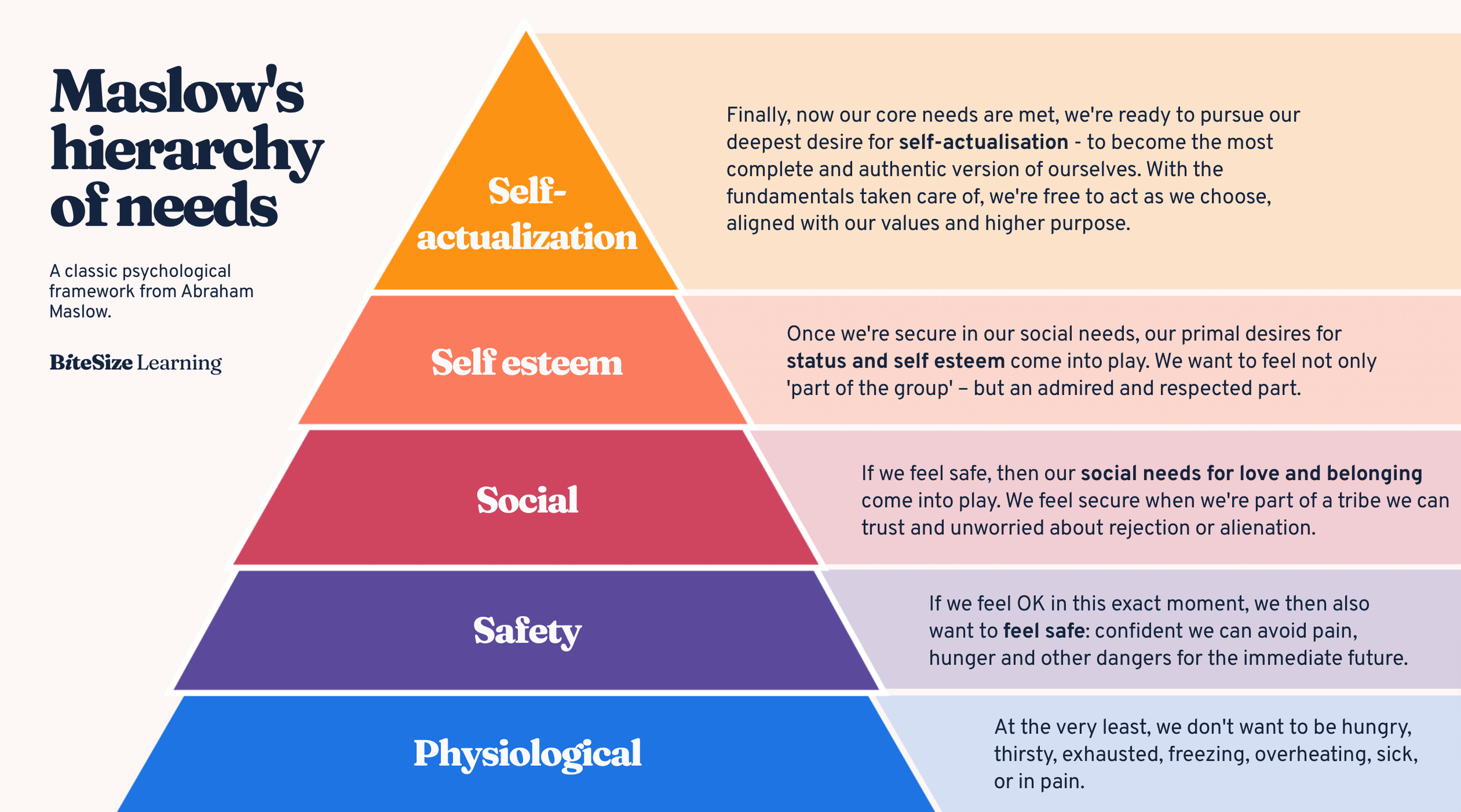
3 advantages of using Maslow’s Hierarchy
Employees feel valued
Increase productivity
Less job turnovers
2 disadvantages of using Maslow’s Hierarchy
It is time-consuming since not all employees need the same thing
Expensive
4 benefits of well-motivated employees
increased productivity
higher job satisfaction
improved morale
reduced turnover rates
What is Taylor's Scientific Management Theory
It focuses on breaking down complex tasks into simpler ones, standardizing work processes, and providing workers with clear instructions and training to achieve maximum efficiency
The 4 things that need to be done according to Taylor's Scientific Management Theory
Study and analyze the work process
Standardize the work process
Select and train workers
Provide incentives for performance
3 advantages of using Taylor's Scientific Management Theory
Increases efficiency
Specialized labour
Clear procedures
3 disadvantages of using Taylor's Scientific Management Theory
It makes workers feel like robots
Employees do not have a set wage since most get paid by piece
Reduces workers creativity
What are the two factors in Herzberg's Motivation Theory that motivate workers
Hygiene and motivation factors
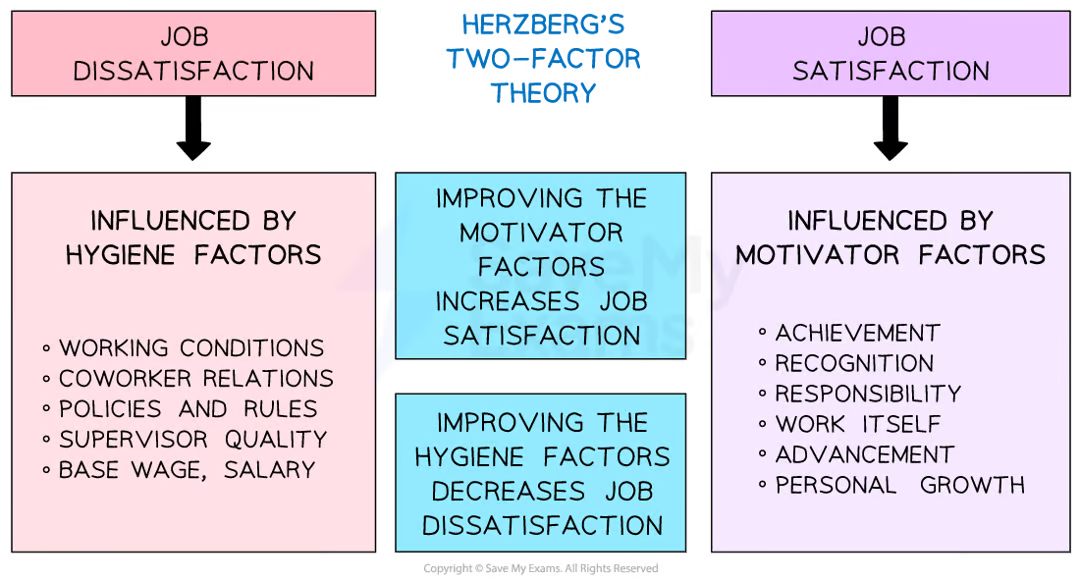
What do hygiene factors mean when it comes to Herzberg's Motivation Theory ( 3 things)
good salaries
job security
good working conditions
What do motivation factors mean when it comes to Herzberg's Motivation Theory ( 3 things)
reward good performance
offer opportunities
provide challenging work
What are fringe benefits?
These are additional benefits usually offered to salaried employees
Fringe benefits could include the use of a company car, private healthcare, or gym membership
Name 3 types of financial methods of motivation
Commissions, bonuses, fringe benefits, promotions, etc.
What is commission?
Receiving additional money for selling x amount of products
Define chain of command
formal line of authority that flows downward from the top management to lower-level employees
Define span on control
the number of employees that a manager or supervisor can effectively manage
What are the two types of organizational structures that businesses can be?
Tall Organizational Structure
Flat Organizational Structure
What is the main characteristic of tall organizational structures?
A long chain of command and narrow span of control
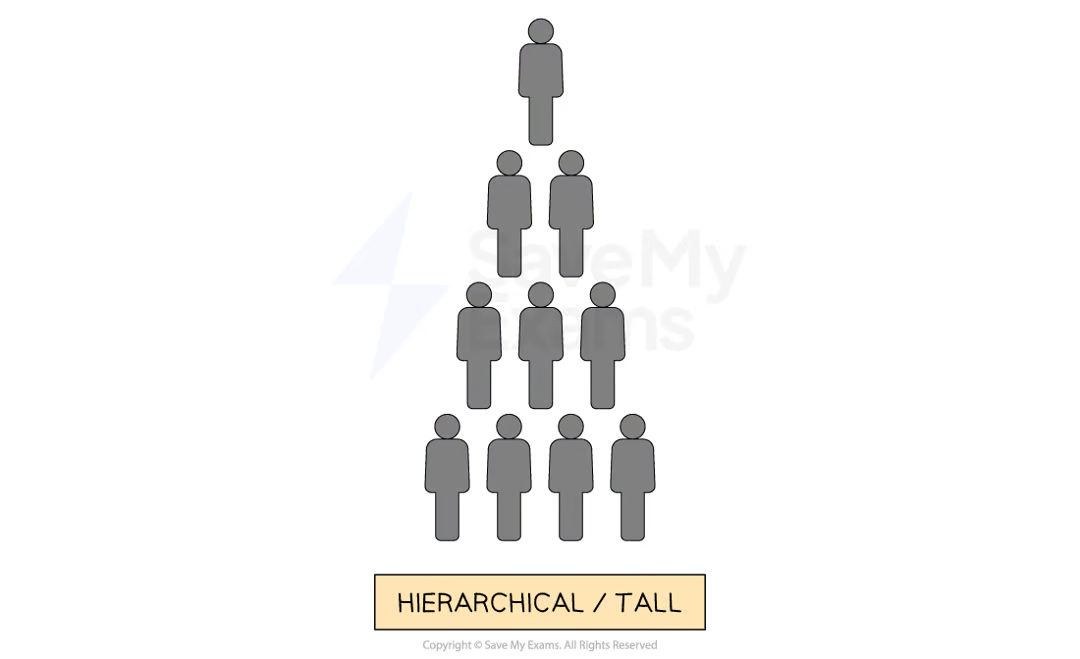
What is the main characteristic of flat organizational structures?
A short chain of command and wide span of control
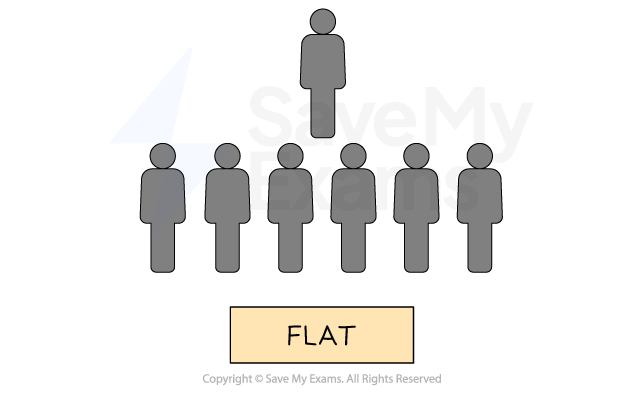
What is delayering when it comes to business hierarchy?
choosing to remove layers from their hierarchy which shorten the chain of command
What is the role of a manager?
They coordinate a team of employees to achieve goals and are responsible for a function within the business.
What are the 4 things managers do (POCC)
Plan
Organize
Command
Control
Wheat is delegation?
a process where responsibility for specific tasks is given to subordinates by managers
3 advantages of delegating tasks
Improves the skills of the employees
Helps the manager focus on other things
Makes the employee feel trust worthy
What are the 4 leadership styles?
Autocratic, paternalistic, democratic, laissez-faire
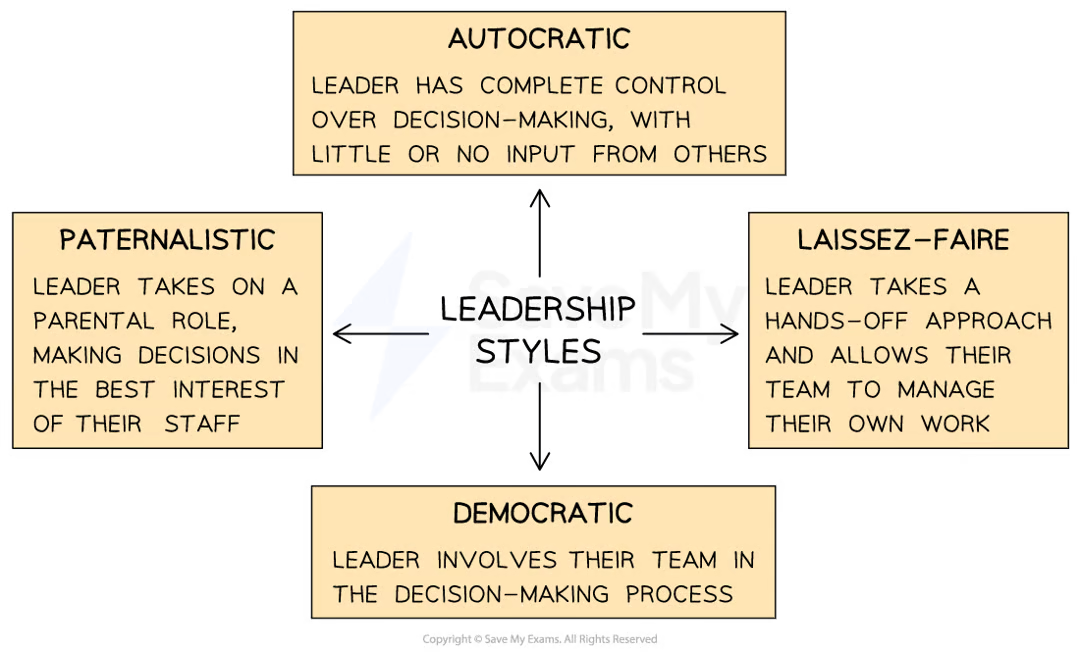
What does autocratic mean in regards to leadership style?
An autocratic leader holds absolute power and authority within a business and wants their employees to follow exact rules
What does democratic mean in regards to leadership style?
Democratic leaders actively involve employees in the decision-making process and encourage discussion, though they have the final say
What does Laissez-Faire mean in regards to leadership style?
Laissez-faire leaders play a minimal role in managing subordinates or business teams, providing little guidance and directions
What does paternalistic mean in regards to leadership style?
a leader who guides their workers and helps them get to where they need to be but they take the final decision
What is a trade union?
A trade union is an organization that represents the interests of its workers in negotiations with a firm’s management or owners
What is recruitment?
Recruitment is the process of attracting and identifying potential job candidates who are suitable for a particular role
What are the two types of recruitment?
Internal and external
What are the 5 steps of recruitment?
Define
Source
Advertise
Applications
Selections

What are the 3 types of training?
Induction training
On-the-job training
Off-the-job training
What is induction training
It introduces new employees to the organization, its culture, policies, procedures and their job roles and responsibilities
What is on-the-job training?
A type of training that takes place while employees are working in their job roles
What is Off-the-job training?
A type of training that takes place outside of the workplace
What is dismissal?
Dismissal (firing or sacking) is the termination of employment by an employer against the will of the employee
What is redundancy?
Redundancy is where a business no longer needs a job role and a worker is dismissed, usually with compensation
4 reasons why an employee might be made redundant
if they are not reliable
if they are productive
if they are meeting business objectives
the number of skills the employee can offer
What is the integration of a business
A merger or a takeover with another business
What is ‘retrenchment’?
cutting a significant number of activities, leading to less employees needed
What are 5 legal controls for businesses that help employees?
minimum wage level
employment contracts
health and safety rules
unfair dismissal is illegal
discrimination
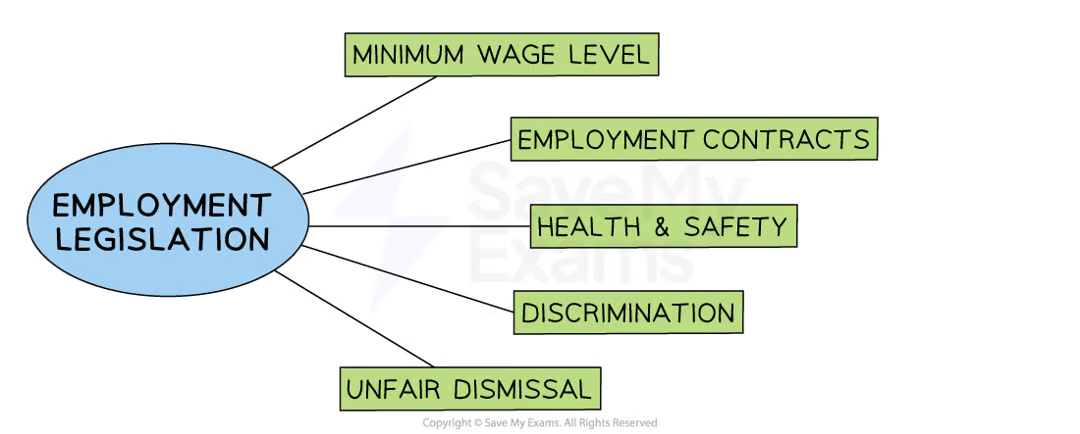
What is External communication?
is the exchange of message(s) between an organisation and external entities such as customers, suppliers or investors
What is One-way communication
One-way communication transmits a message which does not require any feedback
What s Two-way communication
Two-way communication occurs when the receiver gives a response to the message received
What are the three methods of communication?
verbal
visual
written
